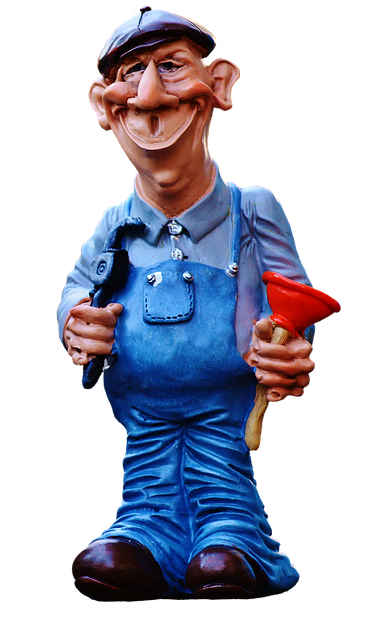Recognize early signs of a clogged drain like slow drainage, standing water, unusual odors, gurgling sounds, and changes in water pressure. Act promptly with household remedies like plungers, hot water, baking soda, and vinegar for minor clogs. For frequent or persistent blockages, consult a professional plumber to identify and fix root causes before damage occurs. Install drain covers to prevent hair and debris buildup, maintaining smooth drainage through regular cleaning.
Are you tired of dealing with slow-draining sinks or overflowing showers? Recognizing the signs of a clogged drain is the first step to avoiding bigger plumbing nightmares. Learn to identify common indicators like water backing up, slow drainage, and unusual noises. Once you’ve spotted the warning signs, our guide will walk you through diagnosing the cause—is it a hair, soap scum, or something more serious? Discover simple yet effective steps to unclog your drains naturally and prevent future clogs from disrupting your daily routine.
- Recognizing Signs of a Clogged Drain
- Diagnosing the Cause of the Blockage
- Steps to Unclog and Prevent Future Issues
Recognizing Signs of a Clogged Drain

Recognizing signs of a clogged drain is the first step in preventing larger, more costly issues. Slow drainage or water that stands and doesn’t flow away are clear indicators. You may also notice an unusual scent, like a sulfurous smell, coming from your drain. If you hear gurgling sounds or water backing up into sinks or tubs, it’s definitely a red flag. Even small changes in water pressure can signal a clog, as can the sudden inability to flush toilets effectively.
Paying attention to these signs early on allows for prompt action. A simple home remedy like using hot water and baking soda mixed with vinegar can often clear minor clogs. However, if the issue persists or occurs frequently, it’s crucial to call a professional plumber to identify and fix the problem before it becomes a bigger, more expensive headache.
Diagnosing the Cause of the Blockage

Many homeowners often overlook the signs of a clogged drain until it becomes an emergency. Identifying the cause early on is crucial to prevent severe damage and costly repairs. The first step in diagnosing the issue is to recognize the telltale signs of a clogged drain. This includes slow drainage, water pooling in the sink or bathtub, unusual gurgling sounds, and a distinct odor. If you notice any of these indicators, it’s time to investigate further.
Start by gathering household items like a plunger, chemical drain cleaners (use with caution), or a snake (a long, flexible tool). Next, attempt to clear the clog using these tools. If successful, the issue was likely minor. However, if the blockage persists, it may be caused by more substantial debris or even tree roots infiltrating your pipes. In such cases, contacting a professional plumber is advisable to prevent further complications.
Steps to Unclog and Prevent Future Issues

Identifying a clogged drain early on is key to preventing more severe issues down the line. Start by observing any unusual sounds, like banging or gurgling, coming from your drains. These could be signs of a clog forming. Regularly check for slow-draining water, which might indicate an existing blockage. If you notice any of these signs of a clogged drain, take action promptly.
To unclog and prevent future issues, try using a plunger to break up the blockage. Pouring boiling water down the drain can also help dissolve hair and grease buildup. For stubborn clogs, consider using a chemical drain cleaner, but be cautious and follow safety instructions. Additionally, install drain covers to catch hair and other debris before they enter the pipes. Regularly cleaning these covers will go a long way in maintaining smooth drainage.
Identifying and addressing drain clogs early is key to avoiding more severe plumbing issues. By being vigilant about recognizing signs of a clogged drain, such as slow drainage or unusual noises, you can take proactive steps to diagnose the cause. Whether it’s hair, grease, or tree roots causing the blockage, there are effective methods to unclog drains safely and prevent future clogs. Regular maintenance and a deep understanding of your plumbing system will ensure smooth sailing in your home’s drainage system.
